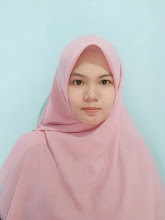Vocabulary development is about learning words ,but
it is about much more than that. Vocabulary development is also about
learning more about those words, and about learning
formulaic phrases, finding words inside them, and learning even more about
those words. Even the idea of what counts as a ‘word’ starts to become confused
when linguists try to produce watertight definitions (Singleton 1999). However,
we will start from words in the recognition that infants, children and adults
talk about ‘word’ and think in terms of a word as a discrete unit. Children
will ask what a particular word means, or how to say a word in the foreign
language, and in learning to read, the word is a key unit in bus building up
skills and knowledge.
The
role of words as language units begins with the early use of nouns for naming
objects in first language acquisition, and of use of other words to express the
child’s wants and needs, e.g. ‘more’ or’ no’.
infants go through a period of rapid vocabulary growth as they start to
interesting confidence in timing between infants learning to point, and early
use of nouns for naming objects in the around them. These is an interesting
coincidence in timing between infants learning to point, and a well-documented
sudden increase in the rate of acquisition of nouns for naming objects, as if
the reinforce each other by enabling the children to get helpful adults to
label the world for them. Many of these words are ‘names for things’, acquired
through ostensive definition, i.e. by the child seeing or touch seeing or
touching the object that a word refers to.
We
need to be aware, as Vygotsky warned, that although children may use the same
words as adults, they may not hold the same meaning for those words (Vygotsky 1962;
Wertsch 1985). The acquisition of form of the words, and children use words in
their speech long before they have a full understanding of them (locke 1993).
We can think of words as rather like flowers growing in the soil.
Vocabulary size
Having
acknowledged the complexity of knowing words, and before pursuing it in more
detail, we will briefly focus on vocabulary development in terms of building up
a greater number of words, some useful work has been done on measuring the size
of learner’s vocabularies that will put a helpful on classroom foreign language
learning.
What
it means to know a word.
To
illustrate the many types of knowledge involved in ‘knowing a word’ consider
the classroom the following classroom extract, in which a native speaker
teacher is talking with second language learner of English about the equipment
needed to draw a pie chart (a circular graph that shows proportions lie a pie
or cake cut into slices)
Developing
meaning in chilhood
Empirical
research shows that increasing the depth of word knowledge doesn’t happen
automatically in a foreign or second language, even in what seems like the most
favorable circumstances where children are immersed in the language through
their schooling.
Categorisation
and word learning
- Basic level
- Intermediate level
- High level
Cultural
content in word meanings
Words
and their meaning are connected in syntagmatic and paradigmatic patterns as
described above. These patterns create networks of connections in the mind that
‘have been variously called ‘schema’ (or schemata’), ‘scripts’, and ‘frames’.
When a word is encountered, the schema that they are part of will be activated,
and the network of activated meanings becomes available level.
The
under of children’s
vocabulary: summary
What
implications does vocabulary and conceptual development across the early years
at school have for vocabulary development in children’s foreign language
learning? Conclusions from this section and principles for teaching are listed
below:
a. The types of
words that children find possible to learn will shift
b. Vocabulary
development is not just learning more words but it also importantly about
expanding and deepening word knowledge.
c. Words and word
knowledge can be seen as being linked in networks of meaning.
d. Basic level are
likely t be more appropriate for younger children, or when learning vocabulary
for new concepts.
e. Children change
in how they can learn words.
source: Cameron, Lynne. 2001. Teaching Languages to Young
Learner. Cambridge:
Cambridge University Press. Page72-94
3.



0 comments:
Post a Comment